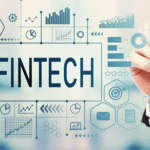Circle Internet Financial, the issuer of the USDC stablecoin, is preparing for a potential public listing, with plans to file a prospectus by late April and possibly launch its initial public offering (IPO) by June. The move follows several postponed attempts over the last few years and comes as the company sets its valuation between $4 billion and $5 billion. As regulatory scrutiny continues to shape the crypto finance landscape, Circle seeks to re-engage with investors and regulators by pushing forward its IPO efforts.
Circle initially announced a public listing plan in 2021 through a SPAC merger with Concord Acquisition Corp., a deal that valued the company at $9 billion. However, the plan collapsed in December 2022 due to the U.S. Securities and Exchange Commission (SEC) not approving the necessary S-4 registration statement. The company later cited the complexity of the regulatory approval process and the novel nature of its business.
Why is Circle pursuing a public listing again now?
After confidentially filing for an IPO in January 2024, Circle is now actively preparing the necessary documents for its public offering. The company has enlisted investment banks, including JPMorgan Chase and Citigroup, to underwrite the process. According to industry sources, the IPO date remains subject to market conditions and regulatory review. Circle has not publicly disclosed the number of shares or price range for the offering at this time.
What other initiatives is Circle undertaking alongside its IPO efforts?
Circle is also collaborating with Intercontinental Exchange (ICE), the parent company of the New York Stock Exchange (NYSE), to explore potential uses of USDC in developing financial products. This partnership reflects Circle’s broader interest in integrating stablecoin technology into traditional markets. ICE’s interest in Circle’s blockchain-based solutions signals a potential crossover between digital assets and conventional finance infrastructure.
Circle Co-founder and CEO Jeremy Allaire emphasized the company’s long-term objective of becoming a public entity to promote accountability and build trust.
“We are disappointed the proposed transaction timed out, however, becoming a public company remains part of Circle’s core strategy to enhance trust and transparency, which has never been more important,”
Allaire said during the 2022 SPAC termination. The company has reiterated that it remains committed to this objective despite regulatory hurdles.
Over the last two years, Circle has made several attempts to go public, including the failed SPAC merger in 2022 and confidential IPO filings in 2023 and 2024. These efforts have not led to an actual launch, primarily due to regulatory delays. The valuation target of $4-5 billion in 2024 is significantly lower than the $9 billion set during the 2021 SPAC deal, reflecting a reassessment of market dynamics and investor sentiment in the crypto sector. The company’s consistent engagement with regulators and traditional financial institutions points to a strategy of adapting to existing financial frameworks rather than bypassing them.
Circle’s efforts to list on public markets will likely test investor confidence in stablecoin issuers and broader crypto-linked companies. USDC, Circle’s core product, has maintained substantial circulation and use in decentralized finance (DeFi) applications, and increased interest from institutional players may provide added momentum. However, regulatory clarity remains a significant factor that could impact the IPO timeline and investor reception. The success or delay of Circle’s IPO could also influence other digital asset firms considering public offerings.
Investors and industry observers should monitor how Circle navigates its dual strategy of public market entry and institutional integration of stablecoin technology. Understanding the regulatory context and historical delays can help anticipate future developments. With ongoing collaboration with traditional financial institutions and a renewed IPO plan, Circle is positioning itself to operate within the boundaries of conventional finance while still leveraging blockchain’s capabilities. Individuals interested in the intersection of finance and crypto should follow how USDC adoption and public market performance influence each other in the months ahead.










